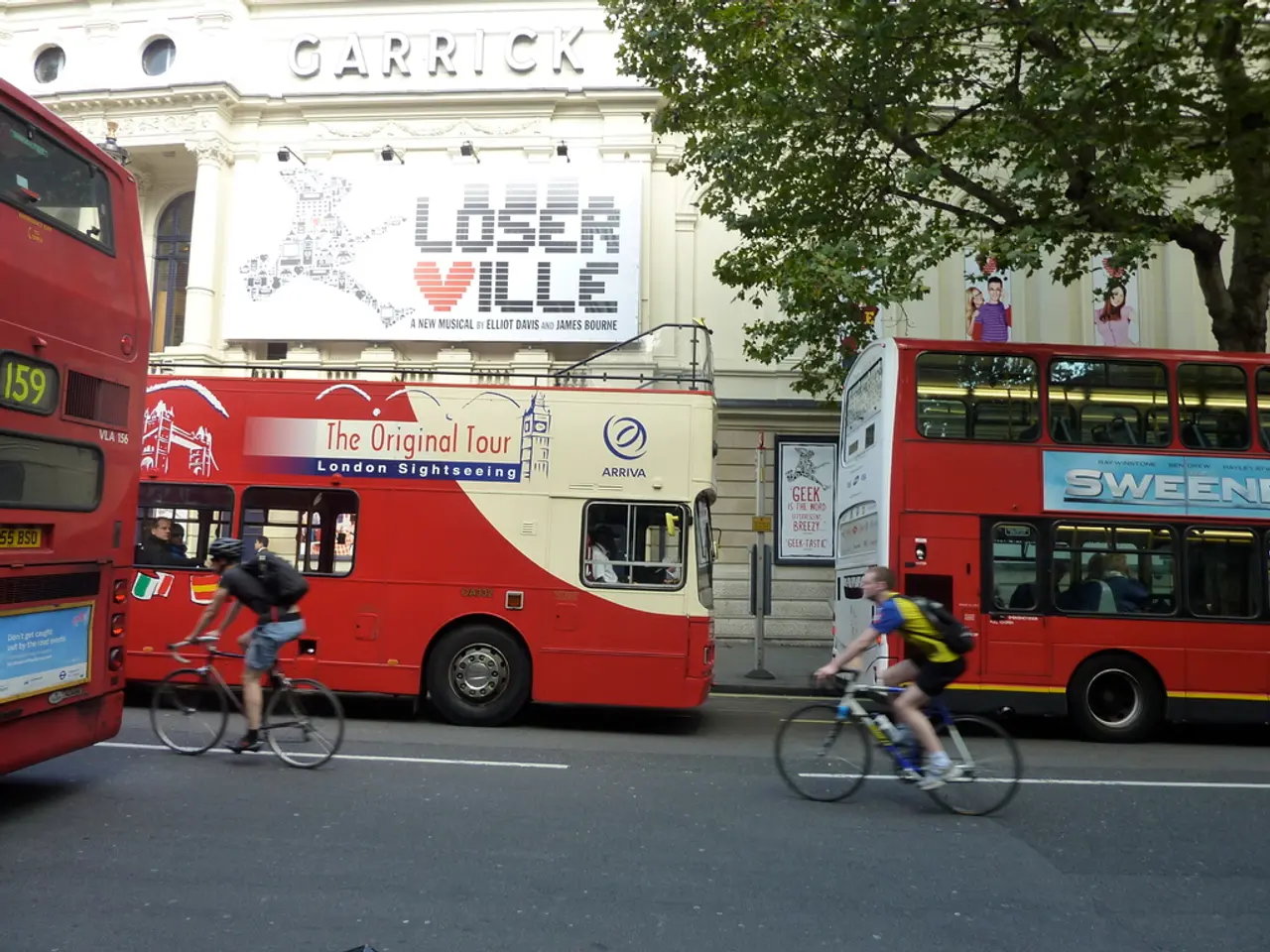Transit Development: A Look Ahead
In a call for change, experts in the transportation sector are urging city planners and agency officials to prioritise the unique concerns of diverse populations, including those with disabilities, living in poverty, or being undocumented.
Jordana Maisel, the director of research at the University at Buffalo's IDEA Center, emphasises the importance of considering the needs of these groups in transportation planning. Tamika Butler, a principal in the transportation sector's equity and anti-racism consulting, echoes this sentiment, highlighting the need for agency officials to reflect the riders they support.
However, the COVID-19 pandemic has taken a toll on public transit agencies, with many, including the Metropolitan Transportation Authority (MTA) in New York, suffering significant financial woes. The Urban Institute estimates that a significant transformation of public transit would require an additional $2 billion annual investment at a minimum.
The pandemic has also highlighted the need for more equitable transportation systems. Gentrification, displacement, and resentment often follow when equity is missing from transportation planning, as seen in cities like San Diego and Los Angeles, California. Accessibility issues, such as the lack of technology for wheelchairs or visual impairments, need to be addressed in transportation planning.
A shift in power is key to avoiding gentrification and building a more equitable public transit system. Ben Fried, communications director for the Transit Center, emphasises the need for expanding public transit services and operating budgets. The real question is how to invest in public transit while centering equity and accessibility.
One component of Biden's climate plan is public transportation, with a promise to provide every American city with at least 100,000 residents with "high-quality, zero-emissions public transportation options." The COVID-19 pandemic led to the popularity of open streets in cities like New York and Oakland, and Paris established special cycleways for bicyclists to safely commute to work during the pandemic.
Centering equity and accessibility in U.S. public transit investments demands a combination of shifting federal performance measures toward accessibility-based metrics, increased and stable funding reflecting community needs (substantially higher than current appropriations), investment in inclusive infrastructure upgrades, and planning that integrates housing policy and environmental goals.
The main constraints are limited and declining federal funding for major projects and systemic planning approaches that have historically deprioritised equitable access. Congress should add multimodal access to jobs and services as a primary performance measure in transportation planning, shifting focus from vehicle speed to actual user access to destinations by transit, walking, and biking.
Upgrading transit infrastructure to comply with the Americans with Disabilities Act (ADA) and prioritise accessibility for people with disabilities, such as the current MTA ADA upgrade programs, is also crucial. Pairing public transit investment with affordable housing development around transit corridors to create walkable, equitable communities is another important strategy.
Using detailed transportation equity analysis tools that evaluate resource allocation fairness, inclusivity for disadvantaged groups, and minimising external costs like pollution, congestion, and crash risk is essential. However, current federal funding environment includes policy complexities, such as restrictions that limit projects receiving federal shares above 40%, which can impede equitable expansion and modernisation.
Tamika Butler, who identifies as a gender nonconforming, Black queer woman, notes the absence of individuals from underrepresented groups in positions of power in the transportation sector. She demands the world we want and deserve, a world where public transit is accessible and equitable for all.
At least 237 public transit workers in the U.S. have died from the virus, according to a September story from the American Prospect. The pandemic has had a significant impact on public transit agencies, causing financial woes and worker shortages. Despite these challenges, the need for a more equitable and accessible public transit system remains urgent.
- Jordana Maisel, a research director, emphasizes the importance of considering diverse populations' needs in transportation planning, such as those with disabilities, living in poverty, or being undocumented.
- Tamika Butler, an equity and anti-racism consultant in the transportation sector, echoes this sentiment, calling for agency officials to reflect the riders they support in their decisions.
- The COVID-19 pandemic has put a strain on public transit agencies, causing significant financial difficulties for organizations like the Metropolitan Transportation Authority in New York.
- A more equitable transportation system is essential, according to experts, to avoid gentrification and its consequences, as seen in cities like San Diego and Los Angeles. Accessibility issues, like the lack of technology for wheelchairs or visual impairments, should be addressed in transportation planning.
- To build a more equitable public transit system, it is necessary to invest in expanding services and operating budgets, shift federal performance measures towards accessibility-based metrics, prioritize affordable housing development around transit corridors, and use transportation equity analysis tools to fairly allocate resources.




